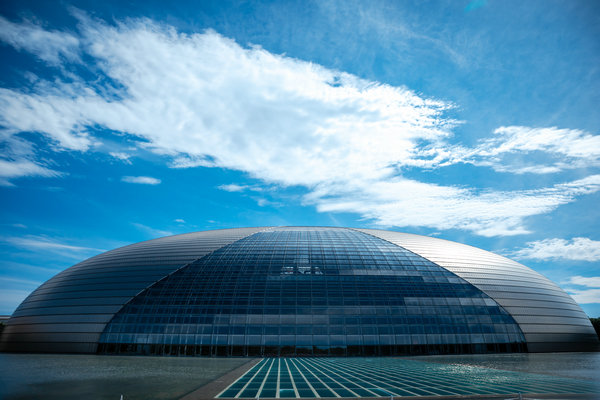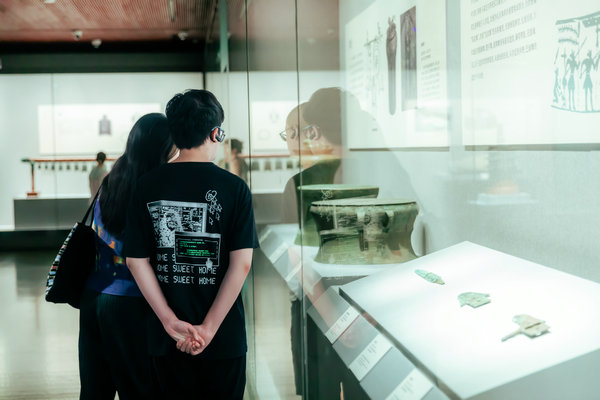

As the summer kicks off, Beijing's National Centre for the Performing Arts has unveiled a new family-focused program that blends art, technology, and history into an immersive cultural experience.
The Art + Family event, Exploring the NCPA: The Technological Magic and Artistic Wonders Behind the Stage, invites visitors to step beyond the theater's polished facade and into the heart of its backstage operations.
Designed as an interactive experience, the program aims to demystify the complex world of stagecrafting while inspiring artistic curiosity among audiences of all ages.

The NCPA, known for its striking titanium "egg" structure floating on a man-made lake, offers a dramatic entrance. Visitors walk through an underwater glass corridor before emerging beneath the venue's vast 212-meter column-free dome, where sunlight filters through transparent glass to cast shifting patterns of light and shadows on the floor.
At the center of the tour is the 40,000-square-meter backstage complex — a technological powerhouse rarely seen by the public. Computerized systems control rapid scene changes in as little as 90 seconds, and a two-level orchestra pit rises and lowers with mechanical precision.

Behind the curtain, 56 dressing rooms equipped with professional lighting and floor-to-ceiling mirrors provide sanctuaries for artists, while maple floors absorb the impact of the dancers' leaps. Overhead, sliding garment racks transport costumes to the stage in under 30 seconds.
On the lower level, the NCPA's digital art gallery showcases modern interpretations of music, dance, opera, and theater. By using AI-generated virtual performers, immersive projections, and 3D holography, the exhibit breaks the boundaries of time and geography and allows audiences to experience artistic traditions from around the world.
The journey concludes with Melodies Between Mountains and Rivers — Selected Historical Musical Relics from Sichuan and Chongqing Regions, a special exhibition featuring more than 200 artifacts spanning 6,000 years of China's history. Highlights range from Neolithic clay sound instruments to finely crafted Ming (1368-1644) and Qing (1644-1911) guqin, illustrating the region's enduring musical legacy.